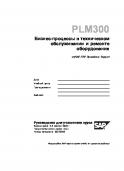Uniforms & Equipment of the Japanese Footsoldier -- Early War
This document was submitted by our user and they confirm that they have the consent to share it. Assuming that you are writer or own the copyright of this document, report to us by using this DMCA report button.
Uniforms & Equipment of the Japanese Footsoldier -- Early War
Japanese Insignia
[Click item in photo to see explanation of what it is]
Japanese Weapons
Photos and text on this page originally came from World War II Infantry in Colour Photographs by Laurent Mirouze. All copyright to them is to Windrow & Greene Publishing Ltd. London.
Imperial Japanese Reading List Links to Imperial Japanese sites
Early War Japanese Infantry Kit Late War Japanese Infantry Kit
Contact page
The 'Hetai', as the Emperor's footsoldier was known, confronted the Allied forces in the Pacific theatre. At the time of the Japanese attack on Pearl Harbor and her subsequent entry into the war against the Allies, the Japanese infantryman was equipped with a kit which had benefited from prolonged field experience in Manchuria and China. In 194142 the infantryman wore the Model 98 uniform, introduced in 1938. This was made in both khaki-brown cloth for winter and lighter cotton for summer and tropical use. In this simple uniform; and the model illustrated here wears summer dress with complete marching kit. In accordance with tradition he carries a flag presented to him by his
family. 1. Model 92 (1932) -- Tetsu-Kabuto -- (helmet), adopted during the Chinese campaign; the pot-shaped steel shell, painted khaki-brown, was fitted to the head by small adjus table pads inside. The frontal insignia was in the form of a star for the Army and an anchor for Marines. [add about using Swede helmet] A helmet cover was often worn laced in place, in khaki quilted linen, with a yellow star or anchor badge sewn onto a round piece of uniform cloth. 2. Tunic Model 98 -- 98 Shiki-Gun-i -- (1938), in cotton for tropical wear. It has five front buttons, two hip vents, a tab to support the belt on the left where the bayonet is slung, and four buttoned pockets. Collar patches bear the insignia of rank, here those of a private first class. 3. Rectangular canvas knapsack -- Hai-nou -- with cloth stowage straps retaining the exterior load, which here includes a waterproof rolled inside the tent section (which could be worn as a poncho) -- keitai-tenmaku -- spare boots -- amiage-gutu -- and the entrenching spade -- Shou-Enpi -- its head removed from the haft and carried in a cloth cover. 4. Tropical helmet -- Boushobou -- There were a number of different types; this one is made of cork with a cotton cover. There was also a flexible version, which the soldier could wear under his steel helmet. 5. Gasmask -- hi-kou -- similar in design to the British box respirator. The bag is called hi-kou-nou. 6. M.1933 canteen -- Suitou -- in khaki-painted aluminum. A strap of the carrier passed through the ring on the stopper. 7. Trousers -- 98 Shiki-Gun-ko -- loosely cut in 'half-breeches' shape from khaki cotton. They were gathered at the ankle by means of buttons, laces or press-studs. 8. Natural leather belt -- Tai-kaku -- with a single-prong buckle. The three cartridge pouches -- Dan'yaku gou -- fastened with straps and studs. The front pair held 30 rounds each; the larger, rear pouch held 60 rounds and the rifle cleaning kit. The bayonet frog, also in natural tan leather, was worn on the left. Note: commonly the front ammo pouch(s) were called zen gou and rear ammo pouch is called kou gou. The IJN called ammo pouches Do-ran. 9. Mess tin -- hangou -- in khaki-painted aluminum, strapped to the pack. 10. Khaki puttees -- Kya-han -- were made of either winter or summer weight uniform cloth; note the 'X'-wrap effect of the puttee straps, characteristic of the Japanese. 11. Standard issue army boots -- amiage-gutu -- in natural leather. 12. Cloth haversack -- Zatu-nou -- for personal effects. 13. Quillon bayonet -- Juken 30 Shiki -- for the Type-38 Arisaka rifle. 14. Model 38 rifle -- Sanpachi (38) Shiki Hoheiju "Arisaka," named after its inventor, Col. Nariaki Arisaka. The T-38 was in service with the Imperial Japanese Army from 1906 to 1945. The T-38 was a 6.5mm weapon which appeared in both 'long' and 'short' models -- though at 44 inches, even the 'short' type was pretty unwieldy for short Japanese soldiers in the thick jungle. 15. The 'Buun-Tchokyu', a patriotic good-luck flag inscribed by the soldier's family and friends with prayers for honour and good fortune.
©2003-2004 Imperial Japanese Army Reenactor's Resource Site Please just ASK before using anything from this website
Website design by:

Related documents
3 Pages • 754 Words • PDF • 544.1 KB
3 Pages • 748 Words • PDF • 529.4 KB
108 Pages • 13,884 Words • PDF • 23.3 MB
644 Pages • PDF • 23.2 MB
228 Pages • PDF • 110.3 MB
152 Pages • 26,203 Words • PDF • 15 MB
441 Pages • 52,690 Words • PDF • 9.8 MB
177 Pages • 138,398 Words • PDF • 42.8 MB
146 Pages • 104,083 Words • PDF • 51.7 MB
190 Pages • 144,682 Words • PDF • 5.4 MB
12 Pages • PDF • 306.6 KB
233 Pages • 100,196 Words • PDF • 1.4 MB











